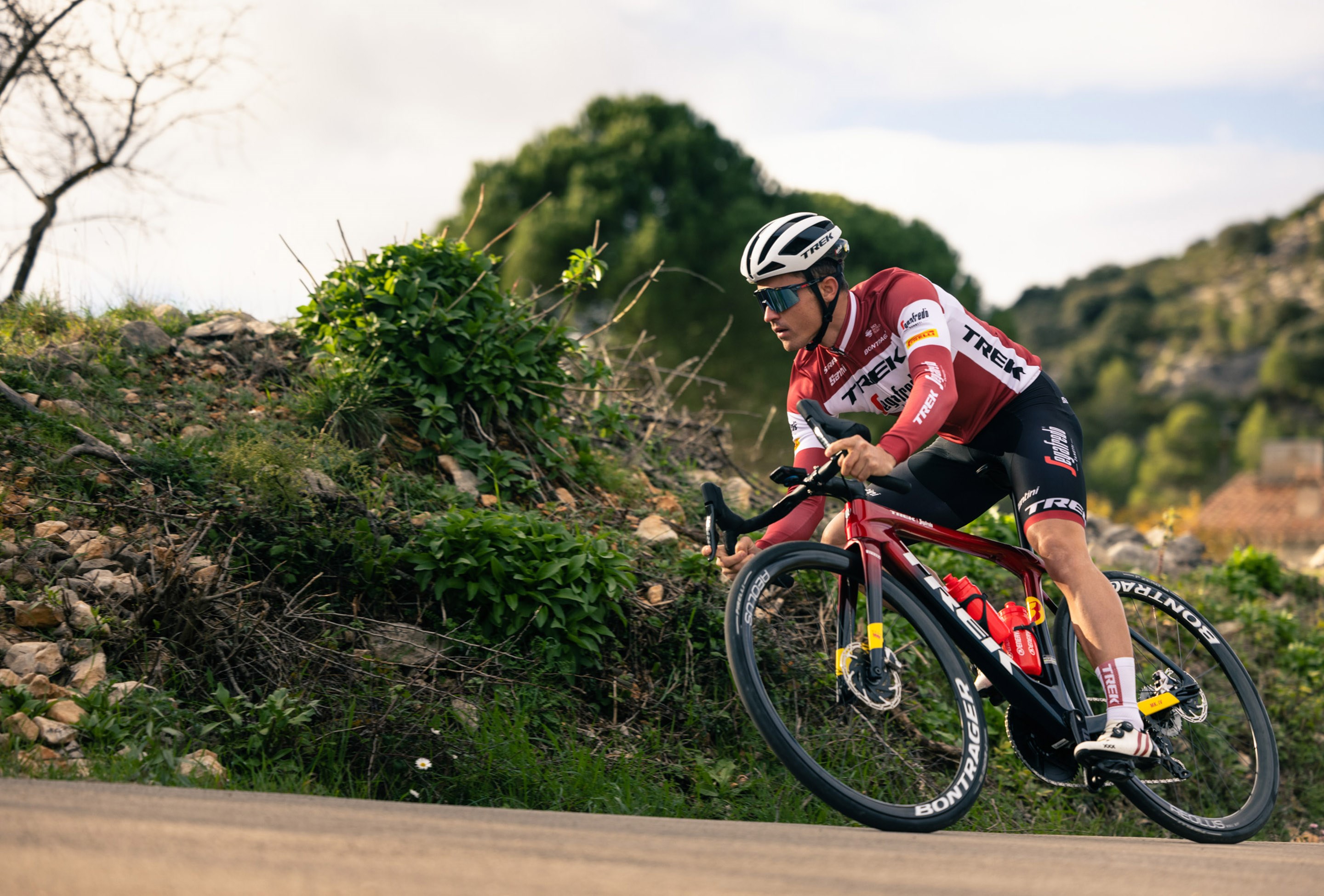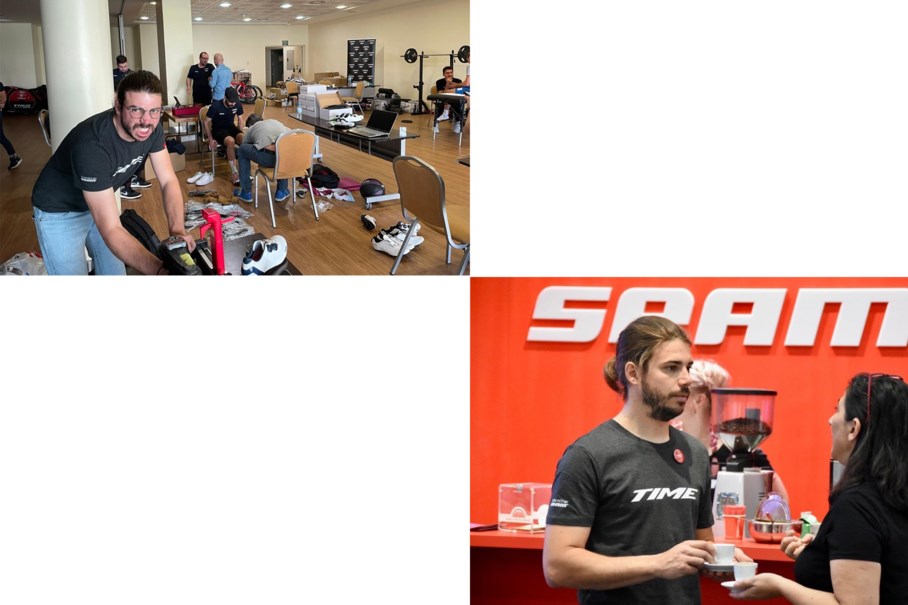NEW TIME PEDAL DAY
TIME Pedals visits Trek-Segafredo training camp to get pros rolling on new pedals
TIME Pedals elevated its presence in the pro peloton in 2023 with the addition of the Trek-Segafredo men’s and women’s WorldTour teams. TIME Pedals Product Manager Benjamin Marinier joined the SRAM Racing tech experts at team camp in Spain to help Trek-Segafredo riders set up their new pedals and cleats. Benjamin’s experience at camp provides insight into how pros view pedal setup and how to get the most out of their new TIME XPRO pedals. Below is an edited transcript of our conversation with Benjamin:
What were your initial conversations with the riders about at camp?
They were focused on the weight. Their first question was, how light are the new TIME pedals compared with the old pedals they had? I told them that even if they chose the XPRO 10, which is the middle of the range, it is lighter than what they were riding. They were happy with that.
Stack height was another question. They were also wondering about retention. When we approached the team with our pedal, we provided them with a better retention system adapted to their needs than earlier TIME models. These new pedals are stronger than the previous version of TIME.
All the riders are with the two-blade configuration (an upgrade also available to all riders). On the road pedal, we also have the option of three retention positions – most of them riding on the smallest retention with two blades. Some of them are riding on the medium retention setting.

Did you visit both men’s and women’s team camps?
Yes, I was there for almost a week with the SRAM Racing Team to collect their first feedback from riding on the pedals. We first had to explain to them all the possibilities they had on the TIME pedals. The current men’s peloton did not know the brand. They were unaware of what we had in terms of cleats, retention, adjustability, etc. I was there to inform them about our capabilities and help them set up the cleats. It’s always the same for the pros; they have a team camp where they first try new equipment. They also switched to new shoes. They were wondering how to set up their cleats on the new shoes. The riders set up the cleats on their shoes. They prefer to do that themselves because it directly impacts them. They just wanted to have an opportunity to have someone to guide them on the correct way to do that.
What are some examples of cleat setup?
It depends on the rider. We don’t have rules to determine which setup for which rider. It depends on their morphology. For instance, some riders have different lengths of leg. For them, you need to compensate for the different leg lengths with internal soles.
Our pedals are lightweight, and it’s the most important thing for professional riders. After that, the retention.
–TIME Pedals Product Manager Benjamin Marinier

What about float?
Most professional riders are on fixed cleats because they want to be connected to the pedal without any float or sensation, or movement on the pedals.
Pro riders’ preference for fixed cleats seems to be a big difference between professional and other riders.
Correct. As regular riders, we are often not set and served at the same level as professionals. It is always better for the everyday cyclist to ride the float if it is not a perfect setup for the fixed cleat.
What is the benefit for TIME Pedals to increase its presence in the women’s WorldTour and to expand into the men’s WorldTour?
For us, it’s a huge opportunity. All the lights can be put on the TIME pedal again now. It also will be a help for the development of future projects. We will receive tons of feedback. Sponsoring men and women, we find the way to make the best product for everyone. We want to produce the pedal that is the most ergonomic.










